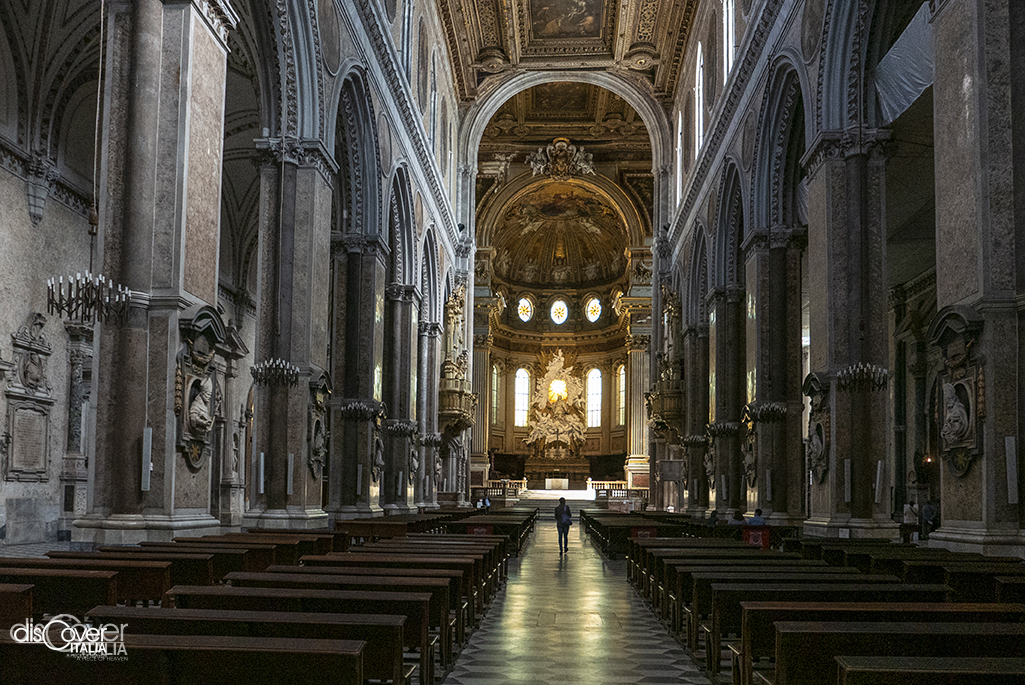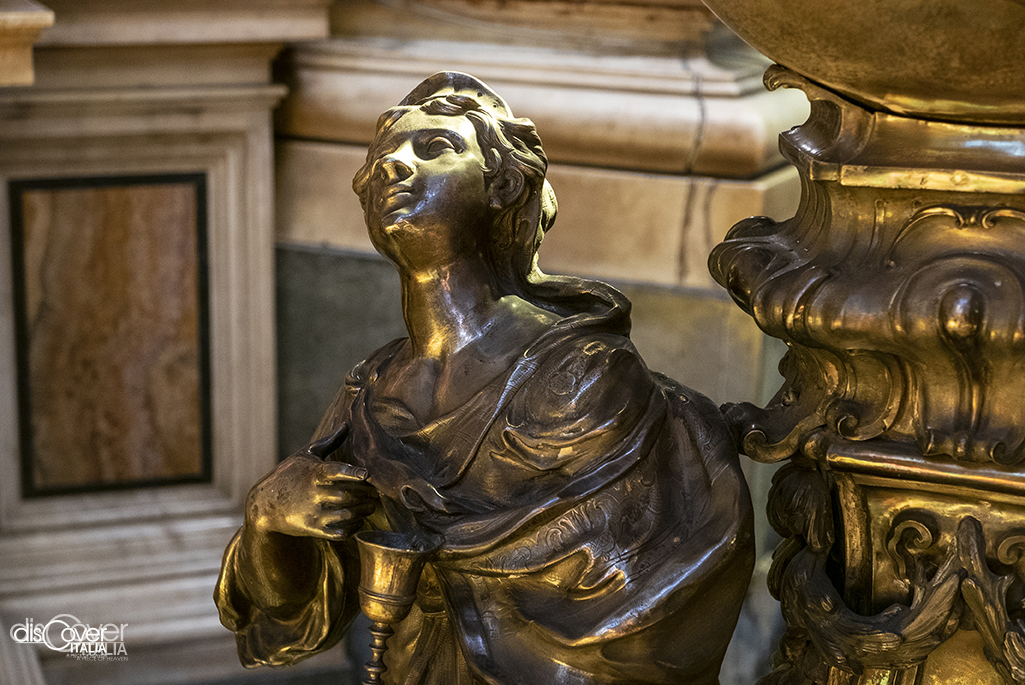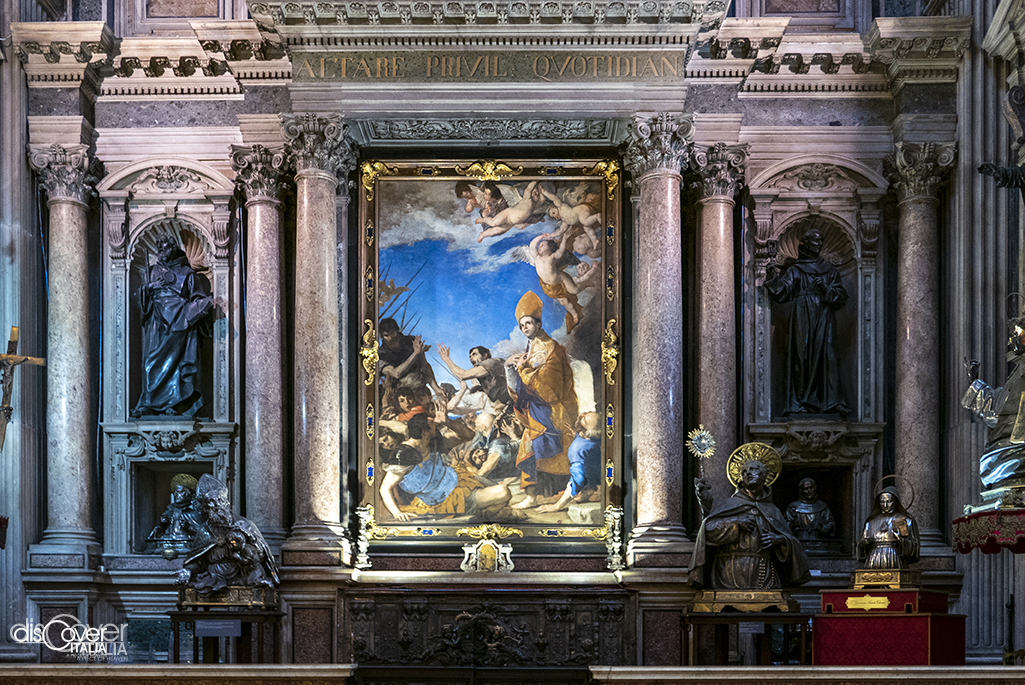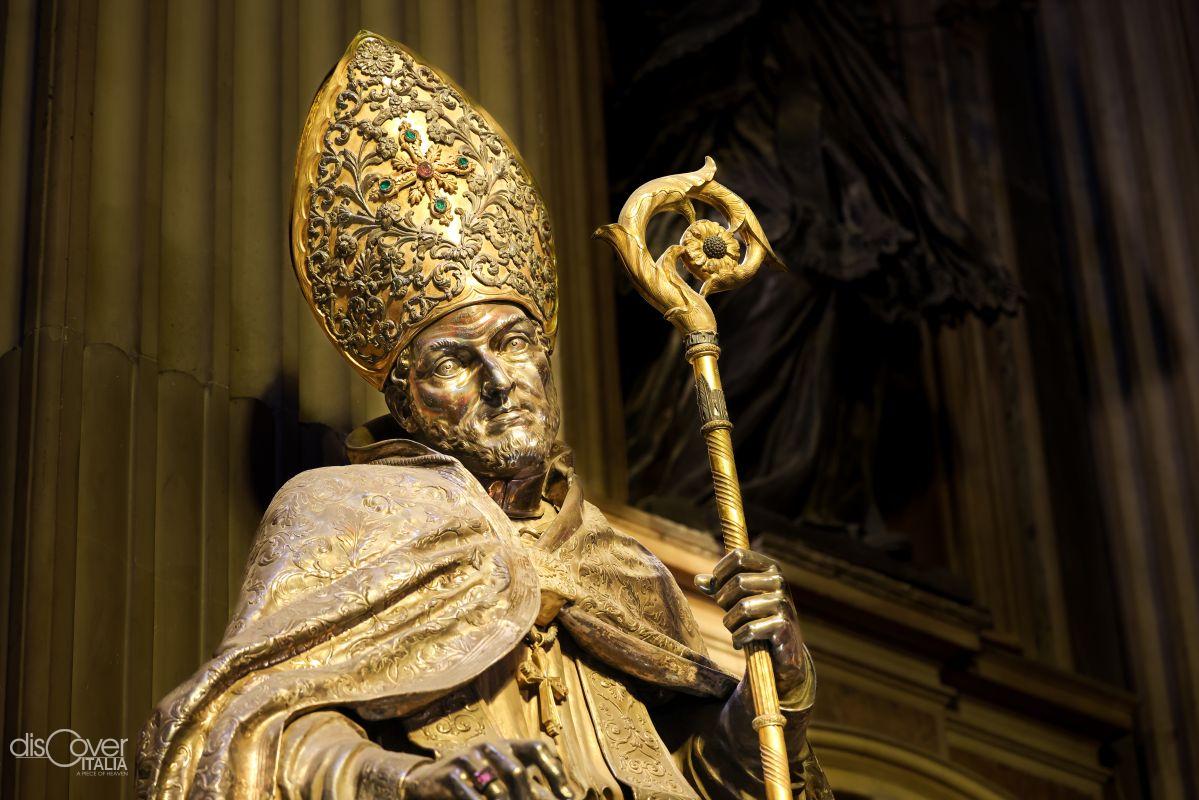Overlapping of levels, eras, styles. To harmoniously compose a monumental complex which, in addition to being a precious treasure trove of works of art, is also a witness and reference to the religiosity of the Neapolitans from the foundation.
It is the Duomo, the Cathedral of Santa Maria Assunta, built in a place intended for worship since ancient times. There was the temple of Apollo and, at the dawn of Christianity, in the 4th century AD, the basilica of Santa Restituta with the baptistery of San Giovanni in Fonte, considered the oldest in the West, and the basilica of Santa Stefania were located. The latter was sacrificed for the construction of the cathedral, when the factory was started under Charles II of Anjou in 1294, involving craftsmen mostly from France.
It was during the reign of Robert of Anjou, in the midst of the artistic and religious flowering that populated the city center with splendid churches, that the cathedral saw the light, in 1313, consecrated to the Assumption in 1314. In the meantime, the French workers Italian masters such as Masuccio I, Giovanni and Nicola Pisano were also added. Therefore, the cathedral was born as Gothic, which completely incorporated, as its own chapel, the pre-existing basilica of Santa Restituta. But its fate was sealed by two destructive earthquakes: the first in 1349, which knocked down the bell tower and the facade, and the other in 1456, with the collapse of part of the nave. Subsequent reconstructions enriched the mother church with two other jewels, the Cappella del Succorpo and the Reale Cappella del Tesoro. More damage came with the bombs of the Second World War, lengthening the already long list of restoration and restyling interventions that had taken place over the centuries between 1969 and 1972. On the occasion of that last restoration, Roman and Greek remains and the coffered ceiling of the sixteenth century emerged.
The “Duomo”
The current facade fifty meters high, in neo-Gothic style, was rebuilt to a design by the architect Enrico Alvino between 1877 and the early twentieth century. It has three portals surmounted by elements of the original Angevin façade. The central portal is supported by two column-bearing lions by Tino di Camaino, like the Madonna with Child above. The door on the right opens only for celebrations in honor of San Gennaro or for special occasions.
The interior is in the form of a Latin cross, in three naves separated on each side by eight pillars in African granite, which support the Gothic pointed arches, which in turn support the trusses of the older ceiling, which in correspondence with the large central nave was later transformed in 1621 in a carved and gilded coffered ceiling, embellished with canvases depicting episodes from the Bible. On each side of the church there are five side chapels with valuable altars and funerary monuments. The aisles have cross vaults and Baroque decorations, introduced in the seventeenth century, like the many stuccoes, which appear in every part of the church. On the counter-facade are the imposing sepulchres of Charles I of Anjou, king of Naples, of Charles Martel of Anjou, king of Hungary, and of his wife Clemenza of Habsburg.
The neo-Gothic transept dates back to the 19th century. The apse was restructured in the sixteenth and eighteenth centuries, when the polygonal Gothic structure was eliminated and the wooden stalls of the choir were inserted. On the right side of the presbytery, we note the Minutolo Chapel,where the pre-existing basilica of Santa Stefania was, and where the sepulchral monuments of the Capece Minutolo family were located. The tomb of Archbishop Filippo Capece Minutolo is mentioned in Boccaccio's novel which has Andreuccio da Perugia as its protagonist.
The celebrations linked to the miracle of the blood of San Gennaro take place in the Cathedral, which takes place three times a year.
The Succorpo Chapel
From the transept you enter the Cappella del Succorpo, which is the crypt of the Cathedral, also known as the Cappella di San Gennaro or Cappella Carafa, because it was Cardinal Oliviero Carafa who commissioned it in 1497. In fact, they returned to the city in that very year from the sanctuary of Montevergine the relics of San Gennaro. The body of the Saint with his venerated relics is placed under the bronze altar. The relics of 51 other saints are kept in the crypt. Right in front of the altar is a marble statue of Cardinal Carafa.
The crypt is divided into three naves by ten ancient columns with Ionic capitals. It is covered with precious marbles, with lateral niches, while the terminal chapel is embellished with a coffered ceiling embellished with figures of saints and cherubs. The decorations of the chapel are by Tommaso Malvito.
The Basilica of Santa Restituta
The entrance to the early Christian basilica dedicated to the holy martyr Restituta is from the left aisle of the cathedral. Constantine I ordered its construction. The chapel is divided into three naves by Corinthian columns. The Baptistery of San Giovanni in Fonte was built at the same time as the basilica of Santa Restituta in the 4th century. It consists of a rectangular portico and the baptismal hall surmounted by a dome. Parts of the original mosaics depicting scenes from the Bible remain.

Below the basilica is the Greco-Roman and early Christian archaeological area.
Entrance to the Cathedral of Naples is free and can take place at the following times: Monday to Saturday 8:30 - 13:30 / 14:30 - 19:30 Sunday 8:00 - 13:00 / 16:30 - 7.30pm –
Royal Chapel of the Treasure of San Gennaro
It is the only part of the Cathedral that belongs to all the Neapolitan people, not to the archdiocese of the city. A peculiarity that has its roots in the circumstances that led to the building of the chapel in the 16th century, when the succession of eruptions and plagues prompted the citizens to turn to their beloved Patron, so that he would preserve them from those dangers.
Construction began on 8 June 1608, based on a project by the architect Francesco Grimaldi. The space was obtained by demolishing the church of Sant'Andrea, three chapels of the Cathedral and even some surrounding houses.
With a Greek cross plan, it is in Neapolitan Baroque style. The main altar stands out in the center of the presbytery, which also houses two side altars and two others at the bases of the pillars that support the dome. Arranged all around, the nineteen bronze sculptures of the patrons of the city who must protect Naples and its people are exhibited. The sculpture of San Gennaro dates back to 1645 and is located near the main altar. In the main altar, however, the ampoules of the miracle with the blood are kept and, above the altar, the bust of the Saint with the bones of the skull. The chapel is connected to the San Gennaro Treasure Museum with works of art, jewels, statues, busts and precious fabrics, gifts from kings and queens to the Saint.
The entrance to the museum of the Treasure of San Gennaro takes place every day at the following times: From Monday to Saturday: 9:30-17:30 last admission at 17:00 Sunday: 9:30-13:30 last admission at 13 :00
Price 5 euro reduced 4 for children up to 6 years and disabled free, Ramps for disabled at the ticket office Free QR code with multimedia visit
Information:
Free admission from 8:00 a.m. to 7:30 p.m.
Guided tours Monday through Saturday from 10:00 a.m. to 6:00 p.m. - Sunday from 1:00 p.m. to 6:00 p.m.
Full ticket 12.00 €
Reduced ticket 8,50 €





Comments powered by CComment